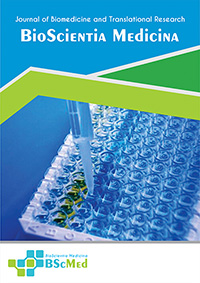Main Article Content
Abstract
Background: Cytomegalovirus (CMV) retinitis is a severe opportunistic infection causing irreversible blindness in patients with advanced human immunodeficiency virus (HIV). In the modern era of highly active antiretroviral therapy (HAART), understanding the key determinants of visual prognosis is critical for effective patient management, particularly in resource-limited settings. This study aimed to evaluate the clinical spectrum of CMVR and identify independent predictors of short-term visual outcomes in a cohort of HIV-positive patients in Indonesia.
Methods: A retrospective cohort study was conducted on HIV-positive patients diagnosed with CMV retinitis between January 2021 and December 2023 at a tertiary referral hospital in Bali, Indonesia. Data on demographics, clinical features, CD4+ T-cell counts, HAART status, and visual acuity (VA) at baseline and three months were collected. Visual acuity was converted to the Logarithm of the Minimum Angle of Resolution (LogMAR) for analysis. A multivariable linear regression model was employed to identify independent predictors of three-month visual outcomes.
Results: The study included 26 patients (38 eyes). The cohort was predominantly male (61.5%) with a mean age of 36.73 years. Severe immunosuppression was common, with 65.4% of patients having a CD4+ count below 50 cells/mm³. Posterior uveitis was the most frequent presentation (68.4%). In the multivariable linear regression analysis, baseline LogMAR VA was the only significant independent predictor of three-month LogMAR VA (β = 0.71, p < 0.001) after adjusting for age, CD4+ count, and HAART status. The baseline CD4+ T-cell count was not a significant independent predictor of visual outcome (p = 0.841).
Conclusion: Baseline visual acuity, a direct functional measure of existing retinal damage, is the most powerful independent predictor of short-term visual prognosis in patients with HIV-associated CMV retinitis. This finding highlights the irreversible nature of retinal necrosis and underscores that the opportunity to save sight lies in preemptive action. We advocate for the urgent integration of routine ophthalmological screening into the care protocols for high-risk HIV populations to detect and treat CMVR before significant vision loss occurs.
Keywords
Article Details
As our aim is to disseminate original research article, hence the publishing right is a necessary one. The publishing right is needed in order to reach the agreement between the author and publisher. As the journal is fully open access, the authors will sign an exclusive license agreement.
The authors have the right to:
- Share their article in the same ways permitted to third parties under the relevant user license.
- Retain copyright, patent, trademark and other intellectual property rights including research data.
- Proper attribution and credit for the published work.
For the open access article, the publisher is granted to the following right.
- The non-exclusive right to publish the article and grant right to others.
- For the published article, the publisher applied for the Creative Commons Attribution-NonCommercial-ShareAlike 4.0 International License.





